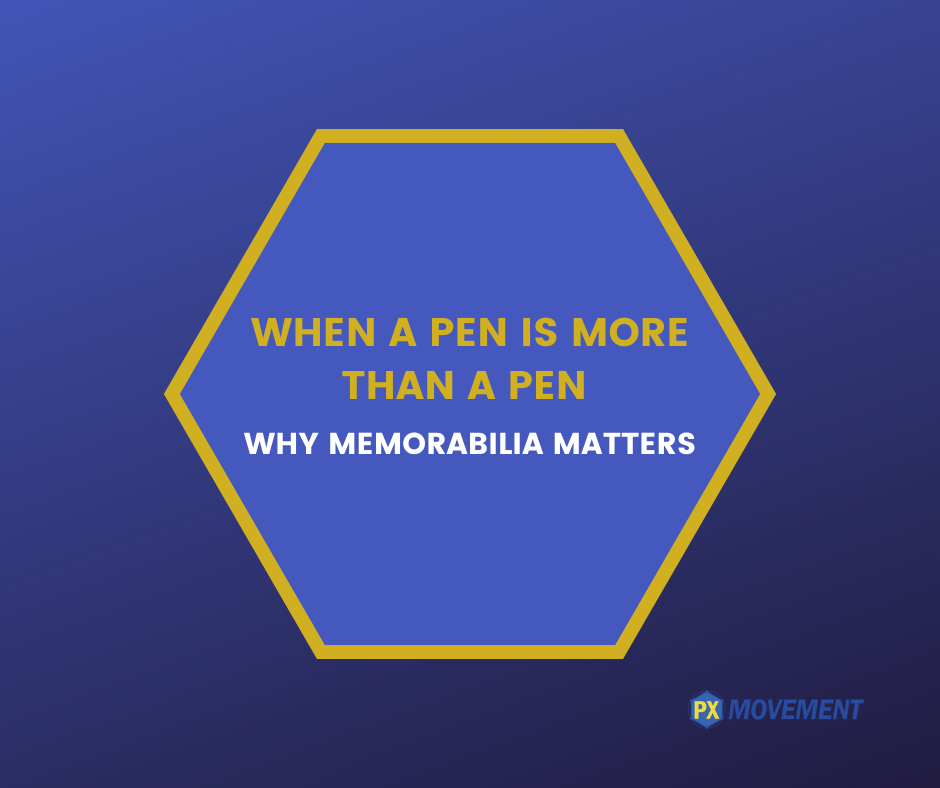Having just finished a breakfast meeting at the Langham Hotel in Boston, I stopped by the front desk and couldn’t help but notice the pen on the counter for guests to sign when they check in. It was unique and beautiful.
Knowing my wife likes nice pens, I asked if I could keep it and the staff member said “Of course!” He went on to explain that the pen was a signature item at the Langham. The pen’s design matched the original wallpaper pattern used in its hotel rooms.
I had heard of the Langham Hotel and now know it’s a 150-year-old institution that was Europe’s first “Grand Hotel.” The lobby was elegant and the brand is known for its extravagant décor in locations around the globe.

That’s a story that now has attached meaning to what could have been simply a utilitarian writing instrument. It shows the power of memorabilia in terms of customer experience.
Think about all those concert ticket stubs you’ve held onto over the years. Or a special t-shirt you just can’t part with despite its being tattered. The memories we attach to these objects are the reason we hold on to them.
When designing your patient experience, you should consider what you can do to enhance the memorability of patients’ time at your practice. Perhaps it’s a branded object (mug, tote bag, or similar). Or maybe it’s a digital memory such as a “selfie” that includes the doctor and the patient.
What matters is that you look for ways to keep your practice in the patient’s memory bank long after their procedure. “Mixing in memorabilia” (a term coined by Experience Economy authors Pine and Gilmore) is an opportunity to make the overall patient experience more unique and inherently personable. It can be a form of celebration when each patient has successfully transformed as a result of your clinical and surgical skills. Patients do remember, especially the little things that have nothing to do with their procedure and everything to do with how they perceive your practice overall.

Got to catch up with friend and surgeon Paul Singh at the recent Outliers Meeting in Miami. He’s recently been named to The Ophthalmologist’s Power List. Congrats, Paul!

